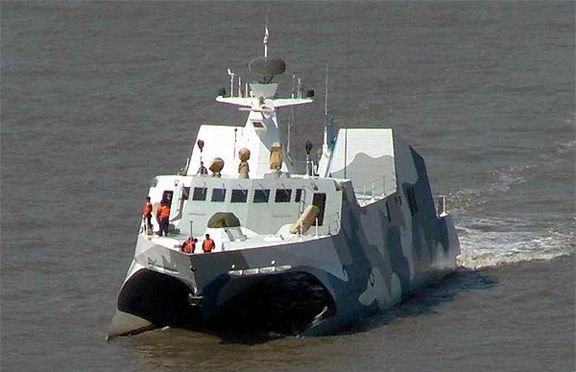
The Project 022 Houbei class fast attack craft-missile (FAC-M) of China’s People’s Liberation Army Navy (PLAN) is believed to have completed its known and projected production run with a total of 83 boats built. Word amongst defense analysts is roughly only about 60 boats are believed to be combat operational and in active service with China’s PLAN. The remaining boats are likely in various stages of operational usefulness from being cannibalized for parts to waiting for a trained crew (which is another issue facing China’s PLAN).
These fast attack craft were originally designed as the ultimate product of the “coast defense” philosophy that had dominated Chinese naval doctrine since the late 1940s. Current ship construction has shifted decisively toward the production of long-range power projection assets, including aircraft carriers, amphibious warfare ships, and all the command and screening assets those ships demand. The PLAN has become a blue water fleet, and coastal defense has taken a backseat.
There has been no evidence of construction of the Project 022 Houbei class for several years. Additionally, there is no evidence that a successor has entered production. Instead, Chinese naval production is now firmly focused on the construction of large surface combatants and aircraft carriers. Recent economic problems have slowed production of these larger ships, but there is no sign of a reversion to smaller ships. All this makes it highly unlikely that the Project 022 Houbei class will see a return to construction any time soon – notwithstanding the current geopolitical conditions.
However, keep in mind that these powerful little boats can be built in a very short time compared to a destroyer or frigate. China can easily and quickly restart such a production line at any time should demand call for it.
Given China’s aggressive actions in the South China Sea and their constant shouts of reclaiming Taiwan, the Houbei class fast attack craft-missile are the perfect “little boats that could” with their armament of eight anti-ship missiles per boat. Additionally, the fact that they attack in several swarming waves (The FAC-M attack in a squadron of eight boats and each boat has eight anti-ship missiles for a total of 64 missiles per attacking squadron.) with an overwhelming firepower that all but assures a percentage of these anti-ship missiles will hit there intended target. These boats aren’t likely to takeout a carrier but they can and do pose a serious threat to frigates and destroyers.
Of course, the cost will be high in the number of boats lost but one gets the feeling that China may view these fast attack craft (as well as the crew) expendable in achieving its objectives.
For more than 30 years, Richard has performed numerous roles as a top analyst for Forecast International. Currently, Richard is the Group Leader and Lead Analyst for Forecast International's Traditional Defense Systems, which covers all aspects of naval warfare, military vehicles, ordnance and munitions, missiles, and unmanned vehicles.
Having previously been Forecast International's Electronics Group Leader for 20-plus years, Richard established Electro-Optical Systems Forecast, as well as having been the prime editor of Electronic Systems Forecast, Land & Sea-Based Electronics Forecast, and C4I Forecast. Additionally, Richard has served as the Naval Systems Group Leader responsible for Anti-Submarine Warfare Forecast andWarships Forecast.



